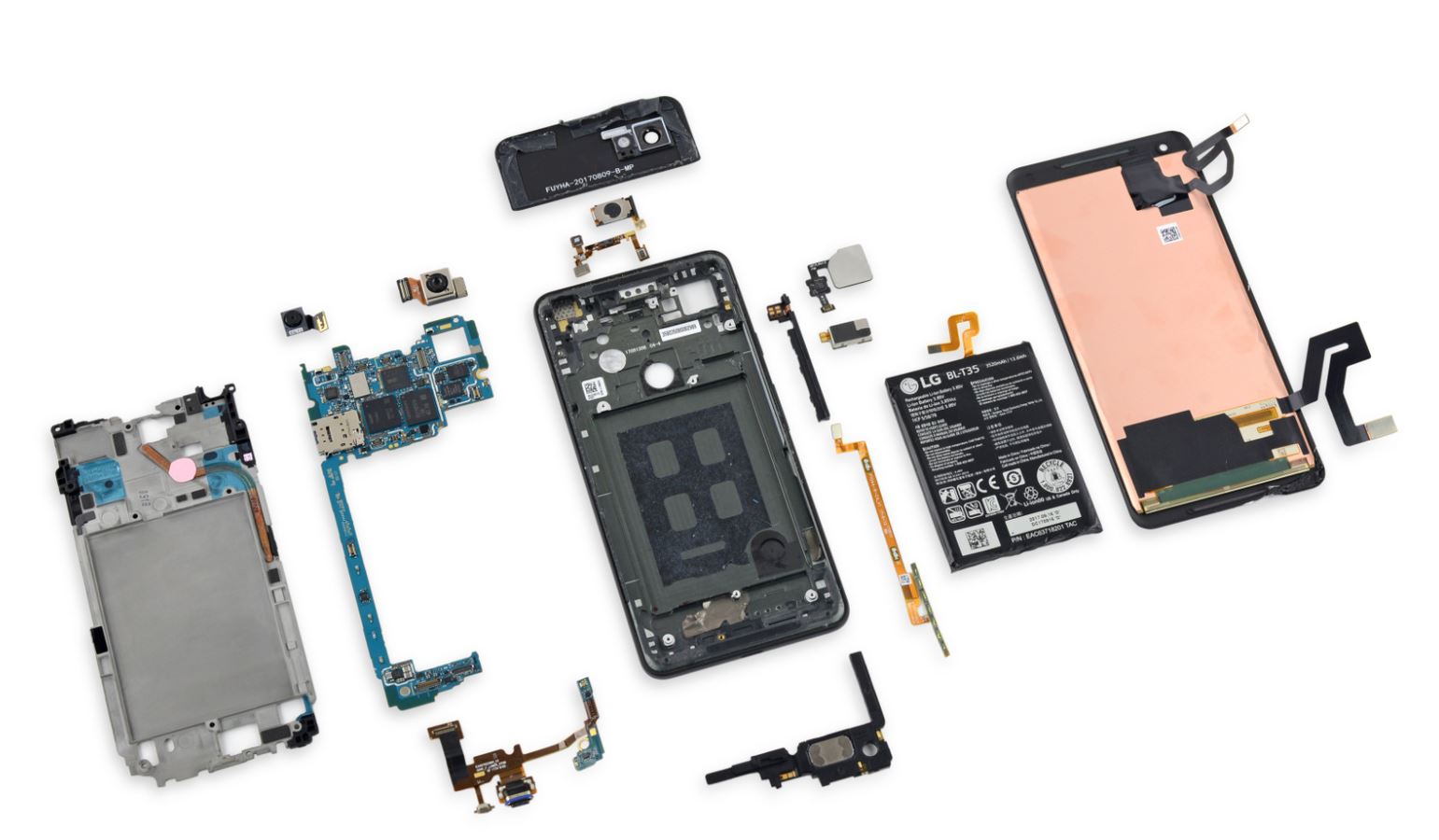Affiliate links on Android Authority may earn us a commission. Learn more.
The Google Pixel 2 XL gets high marks for modularity in its teardown

If you’re waiting on the brand new Google Pixel 2 XL, we have something that might tide you over until you can get your hands on it. Today, iFixit published its teardown guide and repairability score for the phone and gave us a look inside the device.
There are several interesting facts we can glean, like exactly how modular the components are and which parts will be the hardest to replace.
If the battery goes bad in your unit, you’re probably going to want to take it to a professional. Points were deducted from the repairability score due to how tightly walled-in the battery is. Additionally, it no longer has the pull-tab adhesive under the battery that the Pixel and Pixel XL employed. This makes separating the battery from the adhesive much harder in the Pixel 2 XL. The teardown also reveals that the battery capacity is 13.6 Wh, which is slightly more than last year’s 13.28 Wh.
Another area that iFixit criticized is the display. No, we’re not talking about the issues Google recently addressed, but how thin and poorly supported it is. The problem is especially bad around the phone’s grilles. Luckily, LG used foam to secure the display this year and it can be easily sliced through during repairs. This should make removing the display that much easier.
On the positive side, the phone does get high marks for its modularity. The Pixel 2 XL used parts that snap onto to the motherboard instead of being soldered onto it. That means repairs for minor issues will be much cheaper and easier to perform. Instead of replacing an entire motherboard, you can simply pop off the bad module and replace it. The phone also got high marks because it uses Phillips #00 screws instead of proprietary or a less common type of screw.
One of the smartest things that LG did in the entire process was attaching the USB Type-C port via its own board instead of soldering it to the motherboard. The USB port is a high-wear item and can easily go bad or break away from the motherboard. These problems would have been made even worse in the Pixel 2 XL’s case since Google removed the headphone jack and you must use the USB port for wired headsets. Putting the USB port on its own board will cut down on the difficulty and cost of repairs.
The Google Pixel 2 XL comes in with a repairability score of 6/10, slightly lower than last year’s 7/10 (higher is better). While this certainly isn’t an improvement, it is far better than some of its competitors like the Samsung Galaxy Note 8 (4/10), Samsung Galaxy S8 and S8 Plus (4/10), and the Essential Phone (1/10).